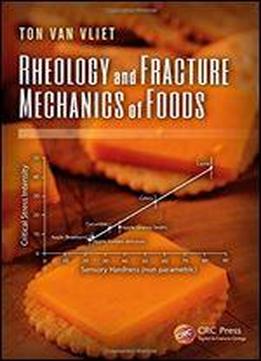
Rheology And Fracture Mechanics Of Foods
by Ton Van Vliet /
2013 / English / PDF
5.5 MB Download
The mechanical properties of food play an important role during manufacturing, storage, handling, and last but not least, during consumption. For an adequate understanding of the mechanical properties of liquid, liquid-like, soft solid, and solid foods, a basic understanding of relevant aspects of rheology and fracture mechanics is essential. Focusing on basic principles, Rheology and Fracture Mechanics of Foods examines how rheological and fracture behavior in food relates to product structure. Divided into three parts, the book reviews basic concepts and emphasizes aspects relevant for studying food products, raw materials, and intermediate products. It then introduces measuring methods and the equipment used for studying mechanical properties of food products, highlighting tests that deliver reproducible and interpretable data. The final part investigates the relation between rheological and fracture behavior of matter and physical structure at the relevant molecular, mesoscopic, and macroscopic length scales. In addition to the basics of rheology and fracture mechanics, the book explores the relationship between measured mechanical properties and the structure of the different types of food and how they may determine texture perception. Containing practical examples of the relationship between food structure, mechanical properties, and sensory characteristics, this book provides an overview of these points for food science and food engineering students at the BSc / MSc level and people working in food research and development.











